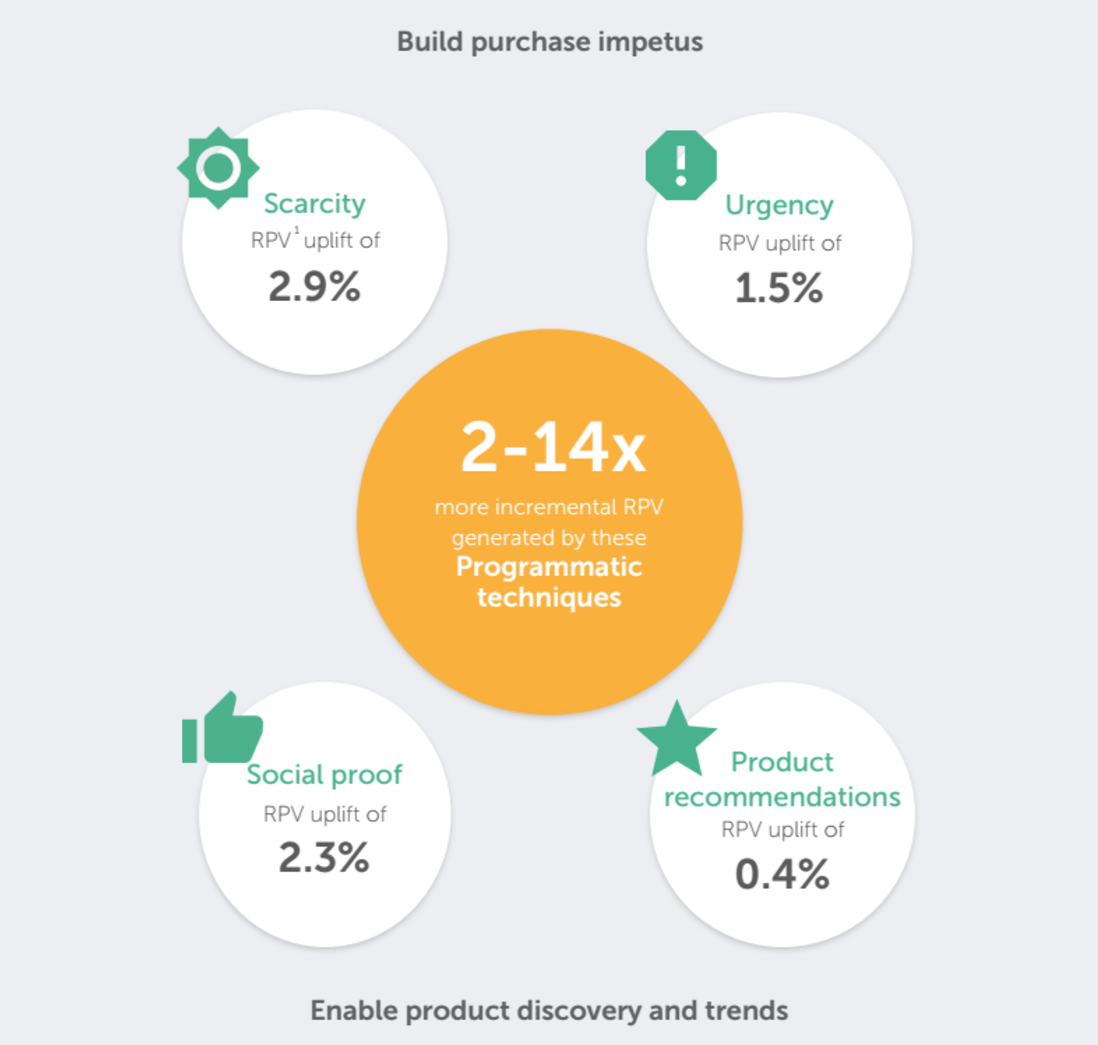Amazon really is an ecommerce behemoth. The retailer, which acquired Whole Foods earlier this week, already commands 50 percent of first-time product searches and dominates the ecommerce industry in almost every way.
But that doesn’t mean it is untouchable. If you know what pushes the average consumer’s buttons, you too can succeed in spite of Amazon and its resources.
Today, Qubit — an optimization and personalization solution provider — has released a new report that takes data from two billion user journeys and 120 million purchases to work out precisely what techniques and tactics really move the needle.
Importantly, this research shows the resulting uplift in revenue per visitor (RPV) — a metric that shows the average increase in bottom line results, rather than the top-of-funnel measurements most conversion optimization studies focus on.
June 5th: The AI Audit in NYC
Join us next week in NYC to engage with top executive leaders, delving into strategies for auditing AI models to ensure fairness, optimal performance, and ethical compliance across diverse organizations. Secure your attendance for this exclusive invite-only event.
And what works best? Scarcity, social proof, and urgency. Three emotional triggers that have little to do with the user interface changes most conversion optimization practitioners focus on.
So why have practitioners been so focused on user interfaces and web elements? Has the available technology led us down this path?
“There was traditionally a place for cosmetic and usability-driven testing, but these returns are diminishing as web design and CMS UX has reached a much higher standard,” Jay McCarthy, vice president of product marketing at Qubit, told me. “Developments in the richness of customer data and the speed at which it can be processed have raised the bar, and we are entering a new era where individually personalized experiences are what will separate those brands that sink or swim.”
In short, marketers like to be creative, and while that is a great use of their abilities, it is not the whole story when it comes to affecting ecommerce revenues.
“Many marketers continue to focus on the low-hanging fruit of cosmetic changes to their websites, as it plays to their creative side and it has a visual, yet limited monetary impact,” McCarthy said. “Not only that, but in the absence of meta-analysis like ours, they have been in the dark about how to prioritize their martech efforts and budgets.”
The research shows that scarcity — highlighting items that are low in stock — increases RPV by 2.9 percent on average. Not impressed? Remember, that is revenue per visitor. Scale that up across your unique visitors per month, conversions, and bottom line results, and you’ll understand just how impressive that result is. Add in the increases from the other emotion-based techniques highlighted in the study, and the improvements are compounded.
In comparison, page redesigns give a mean uplift in RPV of only 0.2 percent. Button changes and navigation changes — traditional conversion optimization tests — actually reduce RPV by the same amount: 0.2 percent. It is clear from the research: Experiences that personalize based on customer, product, or business data — and that include emotional triggers — are providing anywhere from two to 14 times better results than traditional conversion optimization focuses.
To ensure the accuracy of the results, Qubit asked PwC to assure the data and methodology. In addition, the research includes surveys that take in responses from 243 marketers and 1,197 consumers, helping to provide qualitative data for additional insights.
While Qubit has a clear interest in the results of the research, the study does help e-retailers understand how best to compete with the biggest players in the industry. And there’s another field leveler on the horizon for all sizes of business: artificial intelligence. AI is helping companies of all sizes optimize their customer experience for best results.
“Perhaps the most important role that these types of technologies can play is around solving scaling challenges associated with personalization,” McCarthy said. “Not only does this technology help process huge quantities of data to better understand customers in real time, but AI-assisted decision-making enables the best combination of tactics to be used for individuals, which can have a massive impact on sales.”
Insight from studies like Qubit’s, combined with AI-powered technologies, shows promise in helping all sizes of business compete — if marketers can get beyond making user interface changes just for the sake of it.
“This is an area all serious players in ecommerce are actively working on,” McCarthy said. “Having said that, there is still huge room for most brands to take the first step on this journey and move past un-targeted and/or cosmetic optimizations to more targeted and segmented approaches, as our data shows.”
Qubit’s research is available from its website today.


